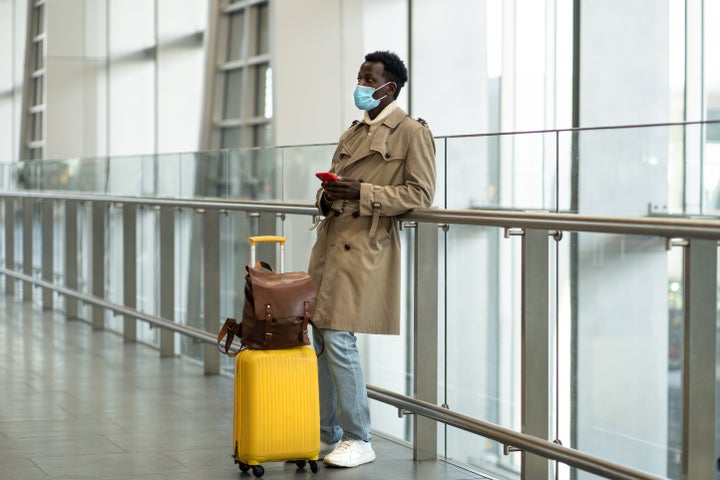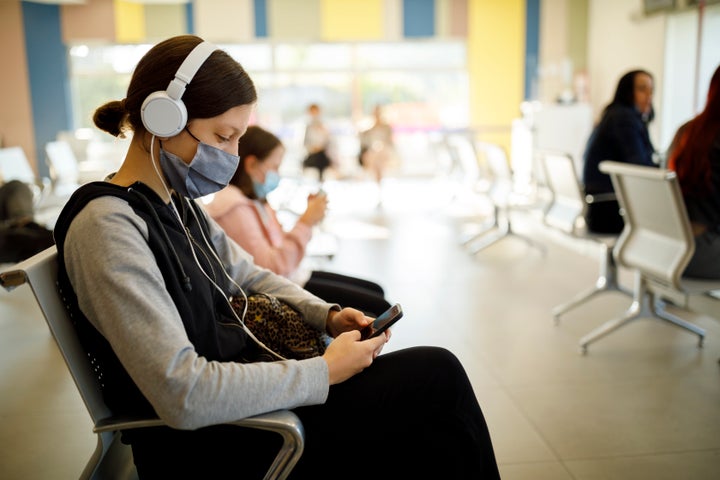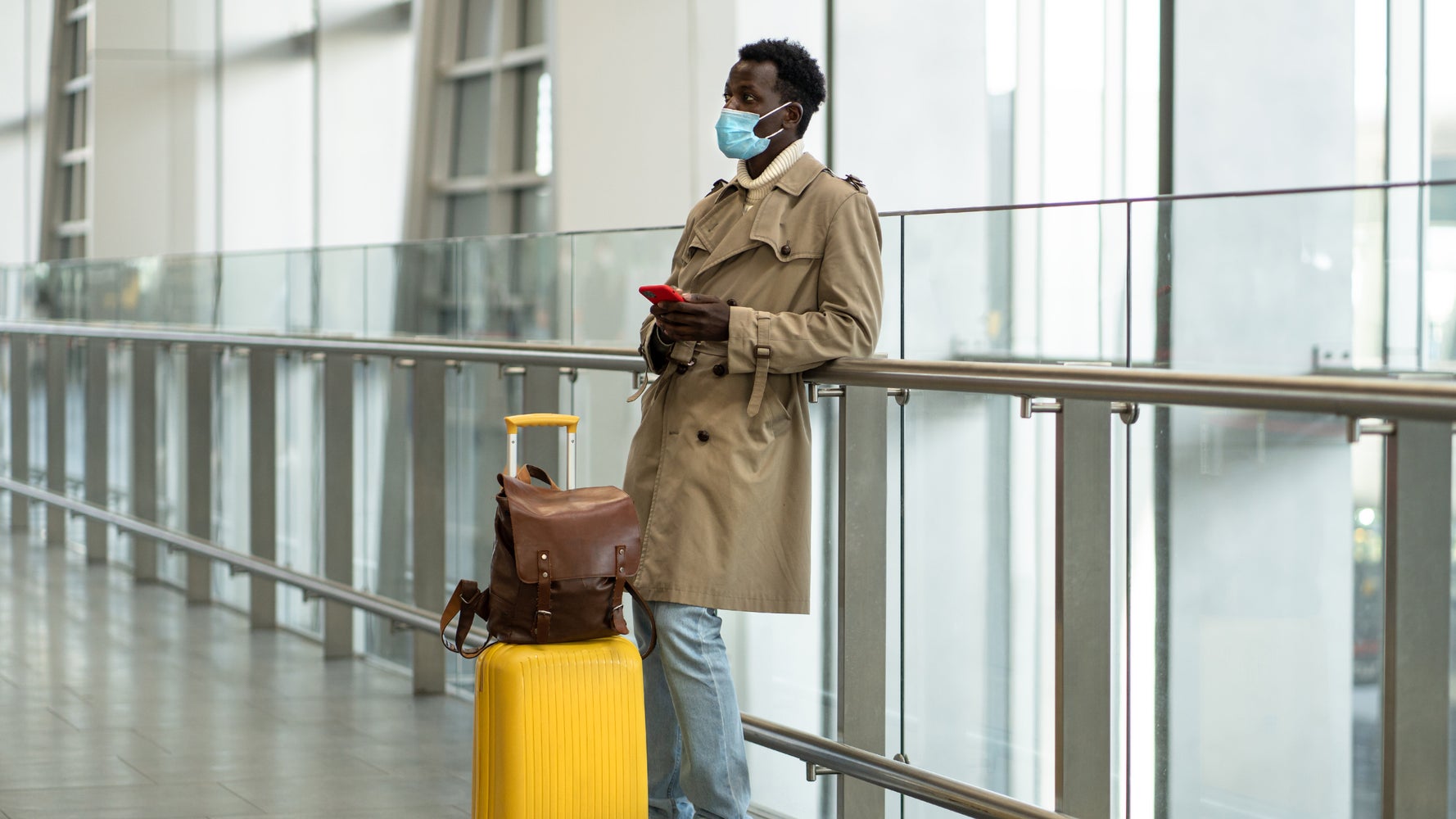
If you’ve been to the airport lately, you’ve seen firsthand the recent boost in air travel. On Sunday, the Transportation Security Administration screened 2,097,433 people at airport security checkpoints, the highest volume since the beginning of the pandemic.
Most experts agree that the risk of COVID exposure is relatively low on airplanes, due to the air filtration systems, mask requirements, sanitation measures and the fact that passengers tend to sit quietly while all facing the same direction. However, many have cautioned, spending time at the airport carries more risk.
“There is nothing worse than ending up sick on vacation,” said Lauren Bryan, an infection preventionist at UCHealth Yampa Valley Medical Center in Steamboat Springs, Colorado. “Airports are a mixing bowl of people from all over who have brought their germs along for the ride.”
Although the pandemic has led to more frequent and intensive cleaning procedures in many airports, certain germs are seemingly unavoidable in that environment. But when it comes to the risk of infection, not all areas of the airport are created equal. With the help of experts, we broke down some of the germiest locations and surfaces at airports.
Chair Armrests
When you get to the airport, it’s important to locate your departure gate, so you have a sense of where you need to be come boarding time. But if you’re trying to cut down on exposure to germs, it may not be the best idea to sit down and wait there for an extended period.
“Sites in airports that are frequently touched but not routinely cleaned include the armrests on chairs in the terminal waiting areas,” said Kelly Reynolds, a professor and chair of the Community, Environment & Policy Department at the University of Arizona. “These can be hot spots for germ transmission.”
Indeed, a 2018 study from InsuranceQuotes.com found that the chair armrests at the gates were among the dirtiest spots in airports. The online insurance marketplace analyzed samples from six surfaces at three major U.S. airports and found the armrests contained 21,630 colony-forming units ― that is, viable bacteria and fungal cells ― per square inch.
So consider wiping down the chair and armrest if you’d like to sit down ― or consider standing up and waiting nearby instead.
“Don’t sit on floors,” cautioned Kadi Banjoko, an infection preventionist in the clinical epidemiology department at the Ohio State University Wexner Medical Center. “They are dirty.”

Handrails
“High-touch areas in airports that are infrequently cleaned include … the handrails along stairs and escalators and the moving walkways,” Bryan noted. But “that doesn’t mean you shouldn’t touch handrails, as falling down the stairs is not a good alternative!”
She advised generally being mindful of what you touch throughout your time at the airport and on the plane. Always wash your hands, or sanitize when you don’t have access to soap and water.
“Carry hand sanitizer in a place it is easy to access without having to dig through your bag ― mine dangles from my purse strap,” Bryan said. “If I am going to be seated somewhere for a while, like on an airplane, I use disinfectant wipes on the armrests of the airplane seat, seat belt clasp and tray table.”
Touch Screens
“I think one of the germiest places is the self check-in monitors,” Banjoko said. “I don’t know how often they are wiped down, but people should make sure they use hand sanitizers after touching those screens.”
According the InsuranceQuotes.com study, these self-serve kiosk screens contain 253,857 CFU per square inch on average. (One screen recorded more than 1 million.) They took the first-place spot for dirtiest airport surfaces tested.
Obviously, the numbers can vary based on the airport and the screen in question, and the pandemic response in many places has included more frequent cleanings. But it still doesn’t hurt to wash those hands.
Security Bins
In 2018, researchers from the University of Nottingham and the Finnish Institute for Health and Welfare published a study about the presence of viruses in airports. They collected surface and air samples around Helsinki Airport and found that the plastic trays and bins in the security area “appeared to pose the highest potential risk.”
Four out of eight samples of the plastic bins contained the rhinovirus or adenovirus, which can cause cold-like symptoms.
In 2014, “Today” correspondent Jeff Rossen and his team took airport and airplane surface samples and found that the TSA bins at U.S. airports were also quite germy. One bin even contained a level of fecal matter that had the potential to make people sick.
Likely due to research like this, some airports have started implementing new security bin technology to ensure a cleaner experience. But we still have a long way to go to reach peak cleanliness in that area.
Water Fountains
In 2015, the trip calculation service Travel Math sent a microbiologist to five different airports to collect samples for lab testing to determine which surfaces had the highest concentration of bacteria.
Their research found that drinking fountain buttons contained an average of 1,240 CFU per square inch ― the most of any airport surface tested. The InsuranceQuotes.com study detected 19,181 CFU on water fountain buttons on average.
A 2012 study of office spaces led by University of Arizona microbiology Professor Charles Gerba similarly found that water fountains can be a germ hot spot, as did earlier research on school drinking fountains from the National Sanitation Foundation.
Amid the COVID-19 pandemic, many water fountains, including those at airports, have been roped off ― but if you have the opportunity to use one to refill your water bottle, consider pressing the button with your elbow.

Bathroom Surfaces
We tend to be on guard about germs and dirtiness when we use public restrooms, but it might be even more vital to do so in airport bathrooms.
“Airports and airplanes host large numbers of travelers daily, increasing the chance that you will come into contact with someone who is ill and could potentially transmit an infectious disease,” Reynolds said. “Airport bathrooms are cleaned regularly, but also heavily used. Stall handles, sink faucets and exit panels on the doors frequently test positive for high numbers of disease-causing microbes.”
Don’t skip the hand-washing step, especially if you’re planning to eat after your bathroom stop, and refrain from touching your face.
Anywhere With Crowds
As a general rule, try to avoid crowded areas in airports to protect your health.
“Germs are spread via contact with others and contaminated surfaces,” Reynolds explained. “The best defense is to avoid close contact with people, particularly if they exhibit illness symptoms.”
She also recommended traveling with disinfecting wipes to sanitize surfaces, as well as your personal items like cellphones, which can pick up germs along the journey. Keep washing and sanitizing your hands, especially before you eat, and don’t touch your face.
“Often when we travel, our routines are altered, which may mean less sleep or changing eating habits, which can disrupt immune defenses and make us more vulnerable to microbial infections,” Reynolds said. “It is important to maintain good sleep and eating habits for maximizing your health and wellness.”
Making wise decisions protects not only your health, but the health of others. And of course, wear your mask at the airport and on the plane.
“Prevention of transmission of infectious diseases heavily relies on source control, which means expecting the sick person to use good hygiene ― sneezing and coughing into their sleeve, using hand sanitizer, etc.” Bryan said. “I know we are all sick of masks, but if you don’t want to become the next host of the virus or bacteria that the passenger next to you is coughing, a mask is your best defensive weapon.”
